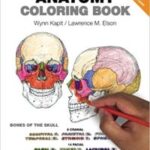
Latissimus Dorsi Muscle
Origin: Spinous processes of vertebrae T7-T12, Thoracolumbar fascia, Posterior third of crest of ilium, Ribs 9-12, Inferior angle of scapula
Insertion: Intertubercular groove of the humerus
Actions: Adducts, extends and internal rotation of the arm at the shoulder
Innervation: Thoracodorsal nerve (C6 – C8)
Blood Supply: Thoracodorsal artery from the axillary artery
Primary Actions of the Latissimus Dorsi Muscle
1. Adduction of the arm at shoulder
Agonists:
- Pectoralis Major
- Teres Major
- Triceps Brachii (long head)
Antagonists:
- Deltoid (middle)
- Supraspinatus
2. Extension of the arm at the shoulder
Agonists:
- Deltoid (posterior)
- Triceps brachii (long head)
- Pectoralis major (sternal head)
Antagonists:
- Deltoid (anterior)
- Biceps brachii
- Coracobrachialis
- Pectoralis Major (clavicular head)
3. Internal rotation of the arm at the shoulder
Agonists:
- Subscapularis
- Deltoid (anterior)
- Pectoralis major
- Teres major
Antagonists:
- Infraspinatus
- Teres minor
- Deltoid (posterior)
Secondary Actions of the Latissimus Dorsi:
1. Assists with extension of the trunk
Agonists:
- Longissimus thoracis
- Iliocostalis lumborum
- Iliocostalis thoracis
Antagonists:
- Rectus Abdominis
2. Assists with flexion of the trunk
Agonists:
- Rectus Abdominis
Antagonists:
- Longissimus thoracis
- Iliocostalis lumborum
- Iliocostalis thoracis
3. Assists with lateral flexion of the trunk
Agonists:
- Quadratus lumborum
- Rectus abdominis
Antagonists:
- Longissimus thoracis
- Iliocostalis lumborum
- Iliocostalis thoracis
4. Assists with anterior and lateral pelvic tilt
Agonists:
- Rectus abdominis
Antagonists:
- Semitendinosus
- Semimembranosus
- Biceps femoris
5. Assists with depression of the scapula
Agonists:
- Serratus anterior (lower part)
- Trapezius (lower part)
- Pectoralis minor
Antagonists:
- Levator scapulae
- Trapezius (upper part)
6. Assists with protraction of the scapula
7. Assists with deep inspiration and forced expiration
Advertisement

 An excellent book for those beginning the study of anatomy. Coloring helps memory retention.
An excellent book for those beginning the study of anatomy. Coloring helps memory retention. For intermediary anatomy students learning skeletal and muscle structure.
For intermediary anatomy students learning skeletal and muscle structure. For beginning and intermediary anatomy . Muscle overlays on the human body. Excellent visuals!
For beginning and intermediary anatomy . Muscle overlays on the human body. Excellent visuals!